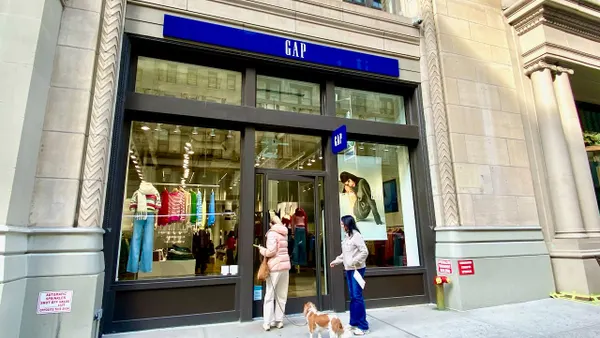Dive Brief:
-
U.S. real gross domestic product increased at an annual rate of 1.2% in the second quarter, better than the 0.8% increase in the first quarter this year, the U.S. Commerce Department said Friday.
-
Household spending carried the quarter, increasing an annualized 4.2%, but that was mitigated by lower state and local government spending and a weakness in housing, according to the report.
-
In good news for retailers, wages continue to increase including for households with lower incomes. Disposable personal income increased $106.3 billion, or 3.1%, in the second quarter, compared with a revised increase of $83.4 billion, or 2.5%, in the first quarter. Real disposable personal income increased 1.2%, compared with an increase of 2.2% last quarter.
Dive Insight:
Consumer spending bolstered the second quarter's disappointing GDP growth, a picture of a muted but steady economy that depends more than ever on household spending.
“The consumer is doing all the heavy lifting,” Nariman Behravesh, chief economist at IHS Markit, told the New York Times. “Aside from technology and software, business spending was bad and housing was also surprisingly weak, which is payback for gains in recent quarters.”
This increased spending is a good sign for retailers, especially as they enter the back-to-school season and finalize preparations for the all-important holiday season. The rise in disposable income is a positive sign, although younger consumers seem to spend this extra cash on experiences rather than material stuff.
Regardless, the National Retail Federation predicts that U.S. families will spend $75.8 billion in the run-up to the new school year, up from last year’s $68 billion, mainly because back-to-school spending is on a “stock up” cycle rather than a “make do” cycle. Spending typically increases one year as families stock up on supplies, drops off the next because so many things last so long, then rebounds in year three because children have outgrown clothing or items need to be replaced.
Another good sign for retailers: Inventories appear to be clearing, the Commerce Department’s BEA said, which again bodes well for retailers going into the crucial holiday season. Many apparel retailers felt the sting of excess inventories earlier this year, which negatively impacted first quarter sales.













